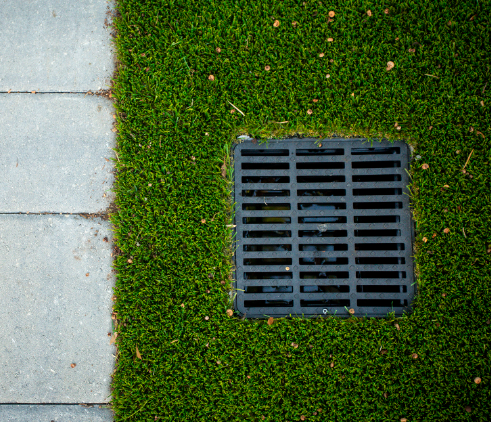Does Artificial Turf Drain Well In Carlsbad?
 Artificial grass has several advantages over natural grass when it comes to drainage. It is an ideal choice for yards that have poor lighting, water restrictions, and uneven terrain. Here are seven reasons why artificial turf drains well:
Artificial grass has several advantages over natural grass when it comes to drainage. It is an ideal choice for yards that have poor lighting, water restrictions, and uneven terrain. Here are seven reasons why artificial turf drains well:
- Artificial turf has multiple layers of drainage material underneath the blades which aids in rapid absorption of moisture from rain or irrigation. This enables the surface to stay dry even after heavy rainfall.
- Unlike natural grass, artificial grass does not clump together when it gets wet, making it easier for water to run off the surface quickly and efficiently.
- The synthetic grass fibers are designed in such a way that they allow air to circulate between them and beneath them, enabling quicker evaporation rates than with natural grass.
- Artificial turf is designed to have a slight slope, which allows for water to run off quickly and effectively from the surface. It is also permeable to water, allowing it to flow naturally throughout the ground.
- Artificial turf does not require fertilizer or insecticides, which can cause runoff and clog up drainage systems.
- Due to its lack of organic material, artificial turf does not develop compaction as natural grass does when it is saturated with water. This eliminates the possibility of standing pools of water on the surface after a heavy downpour.
- Unlike natural lawns, artificial turf is able to dry quickly due to its non-absorbent backing material which enables quick drainage and prevents puddles from forming on the surface during rain showers.
FAQ’s
Do I Need A Drainage System For Artificial Grass?
No, you do not need a drainage system for artificial grass. The turf has multiple layers of drainage material underneath the blades which aids in rapid absorption of moisture from rain or irrigation. This enables the surface to stay dry even after heavy rainfall.
How Quickly Does Artificial Grass Drain?
Artificial turf drains quickly due to its non-absorbent backing material and quick-drying synthetic grass fibers. It is also designed with a slight slope to allow for water to run off quickly and effectively from the surface.
What Happens If You Don’t Drain Your Artificial Turf?
If you don’t drain your artificial turf properly, it can lead to various issues, including: Artificial turf is designed to have a drainage system that allows water to pass through it. If you don’t drain the turf properly, water may accumulate on the surface, leading to poor drainage. This can result in waterlogged turf, which may affect its performance and durability. Excessive moisture trapped on the turf can create a favorable environment for mold and mildew growth. These microorganisms can thrive in damp conditions and may cause unpleasant odors, discoloration, and even health issues. Artificial turf is designed to be durable and long-lasting, but inadequate drainage can significantly reduce its lifespan. Excess moisture can cause the turf fibers to break down more quickly, leading to premature wear and tear. Standing water on artificial turf can create slippery conditions, increasing the risk of accidents or injuries, particularly during sports or activities. Additionally, mold and mildew growth can pose health hazards, especially for individuals with allergies or respiratory issues. To ensure proper drainage and maintain the longevity of your artificial turf, it’s important to follow the manufacturer’s guidelines for installation and maintenance. This typically includes regular brushing to keep the turf upright, removing debris, and ensuring that the drainage system is clear and functioning correctly.
Do Putting Green Need Artificial Turf Drains?
Putting greens generally require some form of drainage system to ensure proper water management and prevent waterlogging. While artificial turf drains can be used in certain cases, their necessity depends on various factors, such as the location, soil type, and design of the putting green. Natural grass putting greens typically rely on a combination of surface and subsurface drainage systems. These include slopes, contours, and subsurface drains made up of pipes and gravel, which help direct excess water away from the green. The soil composition also plays a role, as sandy soils tend to drain better than clay soils. When it comes to artificial turf putting greens, the need for drains depends on the design and base construction. Synthetic turf itself has a built-in drainage system that allows water to flow through the backing material. However, this drainage capacity may vary depending on the quality and design of the artificial turf. In areas with heavy rainfall or poor soil drainage, adding additional artificial turf drains can be beneficial. These drains are typically installed beneath the turf, using perforated pipes or a network of gravel-filled trenches, to improve water movement and prevent surface water accumulation. They provide an additional layer of protection against water buildup and help maintain a consistent playing surface. On the other hand, in areas with well-drained soils and moderate rainfall, the need for artificial turf drains may be reduced. Properly designed base construction and natural contouring can often provide adequate drainage without the need for additional artificial drainage systems. Ultimately, the decision to use artificial turf drains on a putting green depends on the specific circumstances and requirements of the site. Factors such as climate, soil conditions, local regulations, and budget considerations should all be taken into account when determining the need for artificial turf drains. Consulting with a professional landscape architect or golf course designer can help ensure the appropriate drainage system is implemented for optimal performance and longevity of the putting green.
Conclusion
It is evident that artificial turf has several advantages over natural grass when it comes to drainage. It is an ideal choice for yards that have poor lighting, water restrictions, and uneven terrain. For more information, contact Artificial Turf Carlsbad at (760) 991-3400.

